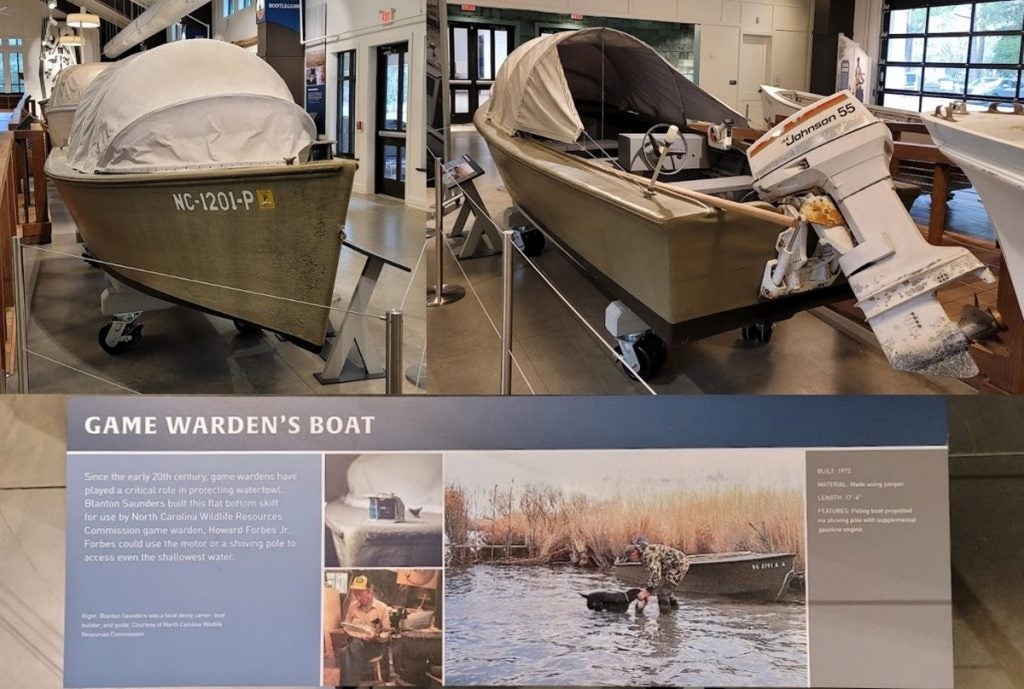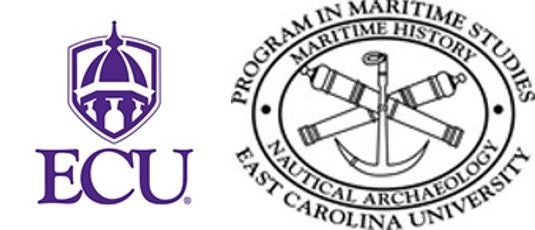Looking for McKnight’s Shipyard
Thursday, 24 February 2022
(The author, Daniel Masters traveled to Currituck, North Carolina to conduct a two-day field survey of possible locations for the McKnight Shipyard and to consult with local historian Barbara Snowden. He stayed at Wilson and Barbara Snowden’s “Beach Cottage” overlooking the Currituck Sound.)
The Snowdens have a keen interest in preserving the history of Currituck County and the history of locally built hand-crafted watercraft. The Snowdens hosted numerous students from East Carolina University over the years and I was just the latest to benefit from their lovely hospitality.

Friday, 25 February 2022

Bad weather kept us from exploring the potential sites of McKnight’s shipyard. Instead, the Snowdens and I went to the Currituck Maritime Museum and the Outer Banks Center for Wildlife Education in the Corolla Historic Park. The Currituck Maritime Museum, which opened in July 2021, displays boats made by Currituck County residents, duck hunting paraphernalia including locally crafted, hand-made decoys, and photographic and video displays of the old United States Life Saving Service, the North Carolina Game Wardens, and many other aspects of Currituck County’s maritime heritage.

Wilson Snowden, along with his life-long friend Travis Morris, was one of the creative forces behind the establishment of the Currituck Maritime Museum. He was especially instrumental in arranging the donation of many of the exhibits, such as the Slick Boat. The Slick Boat, the last boat built by Pat O’Neal, was originally built for Earl Slick. The Pine Island Hunt Club used the boat to transport duck hunters. In later life, the boat served as a fire and rescue boat with a local Volunteer Fire Department.

Built by hand without the use of plans and blueprints, the many skiffs and shad boats share distinctive features which define the common boat building practices of the region. These features often include:
- Inboard gasoline car motors for propulsion
- Sharp prows with a vee-shaped deadrise and pronounced flare
- Tumblehome stern for greater stability
- Angled tunnel at the stern with a recessed propeller to allow operation in extremely shallow water
- Exhaust discharge at or just above the waterline
- Splash hoods or structures

Other boats, like Oscar Roberts’ sailboat, were custom-made to suit the needs of the owner. Roberts built this 18-foot sailboat, pictured below, from juniper to use as a family boat. This flat-bottomed craft designed for shallow water was equipped with an easy to remove or mount two-piece mast, oarlocks, a removable skeg or centerboard, a tiller with a steering extension, fish finder, switches, and wiring for battery-powered running lights (author’s presupposition based on his examination of the boat), and evidence for the use of a small outboard or electric trolling motor.

Outer Banks Wildlife Center
The Outer Banks Center for Wildlife Education was going through a period of transition from being a state-owned and operated facility to being a county-owned and operated facility. The current displays at the Center commemorate the waterfowling and fishing heritage of Currituck County.


Links to more information about the Currituck Maritime Museum and the Center for Wildlife Education:
https://www.facebook.com/Currituckmaritime
https://www.visitcurrituck.com/places/currituck-maritime-museum/
https://www.outerbanks.com/outer-banks-center-for-wildlife-education.html
Saturday, 26 February 2022
Barbara Snowden and I met with Harvey Roberts, a local farmer and water district supervisor. Harvey took us to a site he believes may be Marchant’s Landing to show us a site he believes is the best candidate to be the location of the old McKnight shipyard. Doctor Gideon Marchant, who was a big player in local and state Democratic politics, was the owner of McKnight’s plantation in the Ante-Bellum era.

Harvey favors this site as the location of McKnight’s shipyard for two reasons. First, it is the highest spot along Indiantown Creek in both directions. Secondly, it is near the Indiantown Creek bridge and the main house of the old plantation.
We did a visual survey but saw no evidence of old construction near this point. However, it is important to keep in mind the minimalist nature of colonial-era shipyards. One factor that mitigates against this being the shipyard site is its location on the upstream side of the Indiantown Creek Bridge. More information is needed about the Indiantown Creek Bridge in the colonial period. If it was a swing bridge or a draw bridge, it would be possible for schooners and barges of the types reportedly built by McKnight to pass downstream.

After Harvey took us to see the Marchant Family Gravesite, I attempted a walking survey of another potential site for the McKnight shipyard. This site was east, or downstream of the bridge, and on the north bank of the creek. There are two shipwrecks surveyed by the North Carolina Underwater Archaeology Branch in the 1990s near here. Sheridan R. Jones and C. Alexander Turner III, students from East Carolina University’s Maritime Archaeology Program, also examined the wrecks and used them as master’s thesis projects in the 1990s. Jones worked on the wreck with no known name nearest the Indiantown Creek Bridge. Turner documented Scuppernong.

near a shipyard, store, mill, and Indiantown Creek bridge.
The water was high in the marshy shorelines of Indiantown Creek, thanks to the preceding day’s rain. Much of the area I intended to survey was under 6 to 10 inches of water. Even though the results were inconclusive, I managed to get a good feel for the ground. I was able to develop solid ideas about where to begin in a future survey when, hopefully, the water levels are lower. While I was tromping through the marsh, Barbara talked to some local fishermen. One of the young men, a former student of hers, reported seeing a pile of ballast stones in the creek behind the Regency, a place known as a local hangout in the days of yore. This is another report to follow up on in the future, time and opportunity permitting.

See Also:
Special Thanks to:
The staff of Currituck County Museum and the Outer Banks Wildlife Education Center
Roberts, Harvey – Maps and oral accounts of Currituck County history from his personal research
Snowden, Barbara – hospitality, guided tours, and access to her large collection of research materials on Currituck County
Snowden, Wilson – hospitality, sharing the stories of Currituck’s old-timers and his large collection of boats, outboards, and tractors
References:
Currituck Maritime Museum – 2022 – Displays of the boats and stories of Currituck.
Jones, Sheridan R. – 1996 – The Historical and Archaeological Investigation of the MacKnight Shipyard Wreck (0001NCR). Master’s Thesis. East Carolina University
Outer Banks Wildlife Education Center – 2022 – Displays of the waterfowl, waterfowl hunting, and fishing in Currituck County
Turner III, C. Alexander – 1999 – An Historical and Archaeological Investigation of Scuppernong: A Mid-Nineteenth Century North Carolina-Built Centerboard Schooner. Master’s Thesis. East Carolina University
